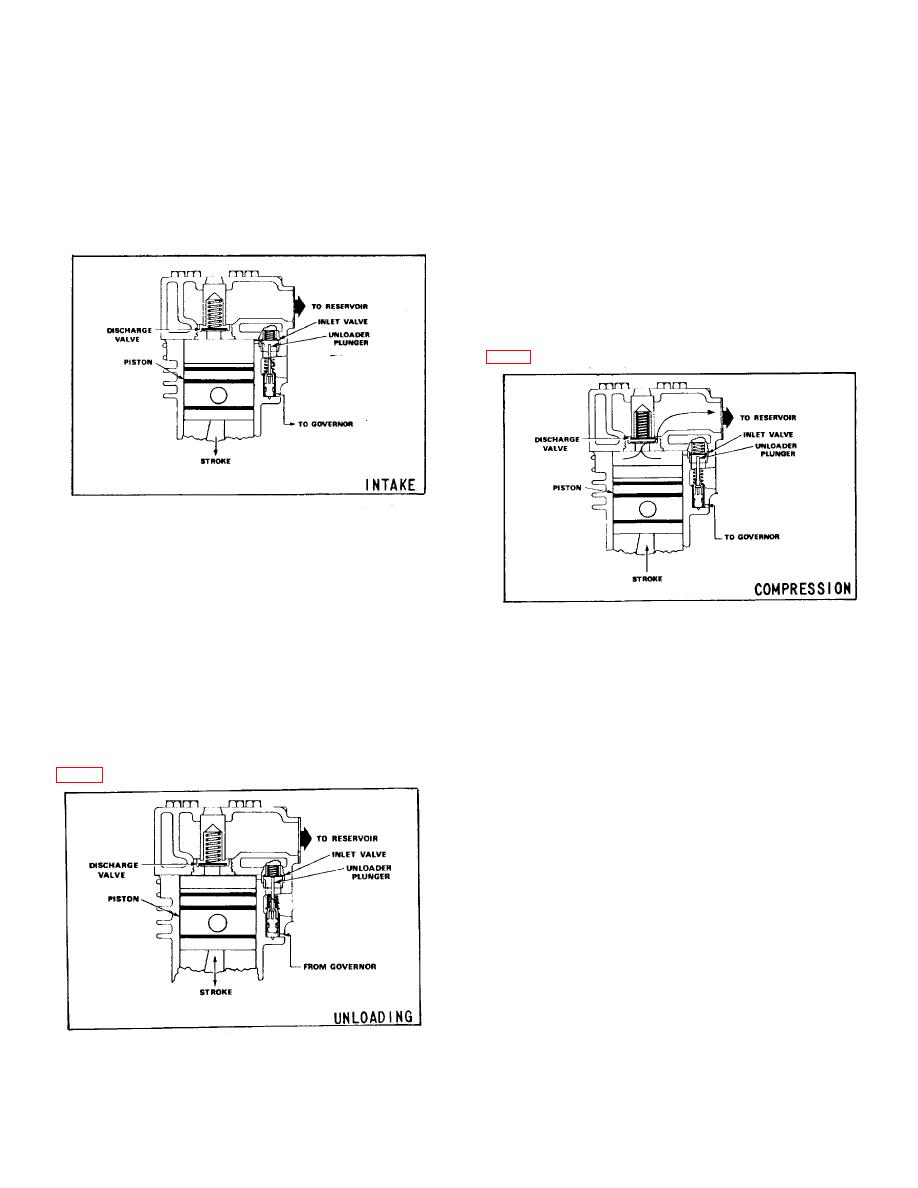
TM 5-3805-263-14&P-3
OPERATION
GENERAL
As the piston reaches the top of its stroke and starts
The compressor runs continuously while the engine is
down, the discharge valve spring returns the discharge
running but actual compression of air is controlled by a
valve to its seat. This prevents the compressed air in the
governor which stops or starts the compression of air by
discharge line from returning to the cylinder bore as the
loading or unloading the compressor in conjunction with
intake and compression cycle is repeated.
its unloading mechanism. This is done when the air
pressure in the system reaches the desired maximum or
minimum pressure.
NON-COMPRESSION (Unloaded)
When the air pressure in the reservoir reaches the high
pressure setting of the governor, the governor opens,
allowing air to pass from the reservoir through the
governor and into the cavity beneath the unloader
pistons. This lifts the unloader pistons and plungers. The
plungers move up and hold the inlet valves off their seats
(Fig. 4 ).
FIGURE 2.
INTAKE AND COMPRESSION (Loaded).
During the down stroke of the piston, a slight vacuum
created above the piston causes the inlet valve to move
off its seat. Atmospheric air is drawn in through the
compressor intake, by the open inlet valve, and on top of
the piston (Fig.; 2). As the piston starts its upward stroke,
FIGURE 4
the air that was drawn in on the down stroke is being
With the inlet valves held off their seats by the unloader
compressed. Now, air pressure on top of the inlet valve
pistons and plungers, air is merely pumped back and
plus the force of its spring, returns the inlet valve to its
forth between the two cylinders. When air is used from
seat. The piston continues the upward stroke and
the reservoir and the pressure drops to low pressure
compresses the air sufficiently to overcome the
setting of the governor, the governor closes and in doing
discharge valve spring and unseat the discharge valve.
The compressed air then flows by the open discharge
The unloader saddle spring forces the saddle, pistons
valve, into the discharge line and on to the reservoirs
and plungers down and the inlet valves return to their
seats. Compression is then resumed.
COOLING
The compressor has a water-cooled head and is cooled
by vehicle coolant.
FIGURE 3
3-133

